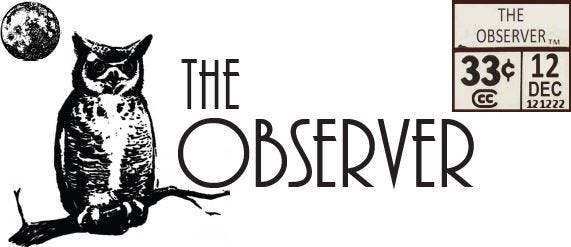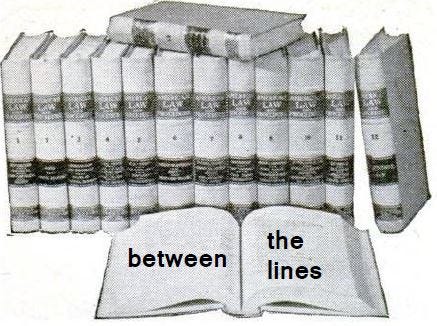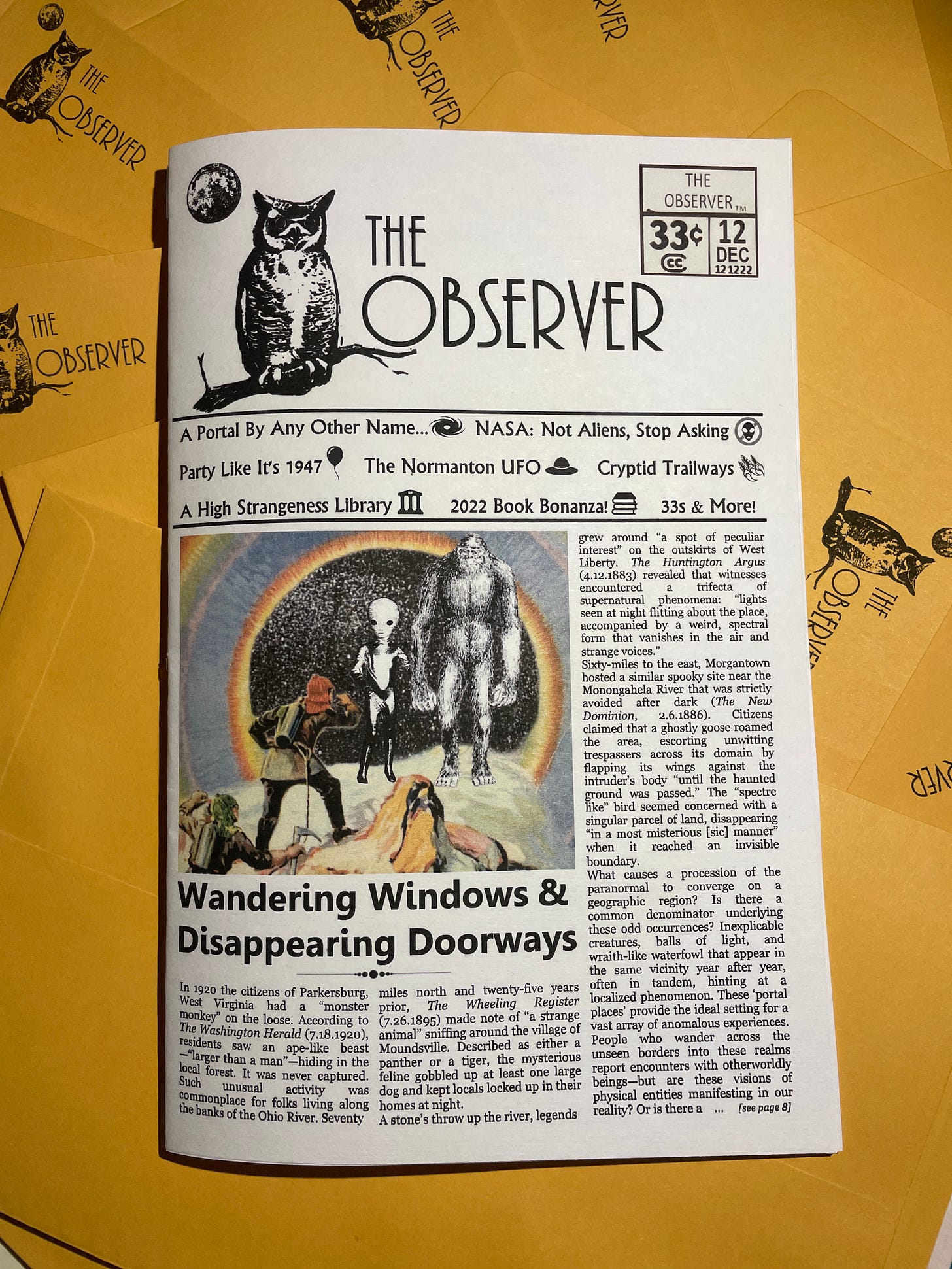Alien Reflections and Nazi UFO Lore
We save the best for last with our review of some new-adjacent books from 2022
Alien in the Mirror: Extraterrestrial Contact Theories & Evidence
by Randall Fitzgerald, 454 pgs., 2022
Alien in the Mirror has a simple format: it’s a book about books. Randall Fitzgerald took it upon himself to read 209 works about UFOs, ETs, and related phenomena in order to provide concise summaries about their central themes and lasting influence on the field. The resulting abstracts aren’t just regurgitations from the inside flap of a dust jacket—Fitzgerald is well-versed in the history of ufology and uses his knowledge to supply context, connections, and insights between seemingly discrepant titles. He also peppers in original essays that showcase his journalistic chops.
The first edition of the book was published under a different name in 1979, underwent another iteration 20 years later, and was renamed and re-released with updated content and additional synopses in 2022.
While the significance of each book on his list is up for debate, Fitzgerald lays out sensible qualifying criteria: “enduring impact on public debate, contribution to advancing scientific understanding, or the thought-provoking quality of their content.”
The result is a tome that is more than the sum of its parts. His choices track the development of ufological trends across history and allow the reader to identify patterns in the data.
In his forward to the book, UFO researcher Jacques Vallée called the undertaking a “reappraisal” of the field’s literature. This type of exercise is worthwhile considering the rapid developments in technology and science. Details tucked into decades-old pages that seemed unimportant in the past can gain new relevance when examined under a modern scope.
One thing you won’t find in this compendium? The writer’s opinion. Fitzgerald does an admirable job of biting his tongue without compromising the authenticity of his perspective. You aren’t ever quite sure how he feels about the title or author he’s reviewing, and this absence of overt bias makes the volume accessible for readers from all points of view.
He doesn’t shy away from giving ink to ufology’s critics—devoting an entire chapter to the work of debunkers and skeptics (“Are they really skunks at the UFO picnic?”). This agnostic approach ensures that readers don’t feel ‘alienated,’ for their feelings about controversial topics and makes Alien in the Mirror a reliable resource for those who don’t have the time (or budget) to track down each individual text.
Some of the best sections come when Fitzgerald deviates from his book report formula to provide us with his own articles. His deconstruction of the 1997 Phoenix Lights incident is an illuminating piece that came about after over 50 eyewitness interviews. He concentrates his efforts on those who had a front row seat via binoculars, telescopes, or airplane cockpits. The story paints a different picture than the one commonly pushed by the mainstream press—even though he was technically writing on behalf of Reader’s Digest—“the most widely read publication in the world at that time.” He notes the frequency with which ground observers compared their sightings to the craft seen in the film Independence Day, a movie that had been in theaters the previous summer. These anecdotes are then contrasted against reports from people who got a closer look at the spectacle. Fitzgerald reveals that they described seeing five distinct craft, not one large ‘mothership’ like those from the movie.
The author ultimately comes through with a delightfully conspiratorial explanation for the entire performance, leaning toward the theory that the light show over Phoenix was an artificial projection in the sky—an old-fashioned government-sponsored psychological warfare experiment. He speculates that this public test of “holographic deception technology” might have been designed to evaluate society’s reaction to the appearance of unknown aerial objects.
The book’s title is derived from Fitzgerald’s ruminations about the nature of “The Phenomenon” and its ability to “mirror” human consciousness. His conclusion is worth printing in full:
“If we were to imagine The Phenomenon as operating like a kind of cosmic TV ‘reality’ show, as with the various reality shows we see on television today, when the cameras turn on and the act of observation begins, human behavior changes, often to mirror audience expectations. Could The Phenomenon be operating on the same principle, reacting to the observers, fulfilling expectations with an interactive mirroring that blurs the distinctions between producer and director and actor. In this scenario, The Phenomenon continually needs human observer consciousness to complete the scene and continue the psycho-drama.”
If you read any selections from The Observer’s 2022 Book Bonanza, make it this one. And not just because it’s like reading 209-books-in-one.
The Saucer and the Swastika: The Dark Myth Of Saucer UFOs
by S.D. Tucker, 320 pgs., 2022
S.D. Tucker’s entry into our 2022 Bucket o’ Books documents the history of “Nazi ufology” and its lasting influence in modern culture.
Don’t be fooled by the flying saucer on the book’s cover, the contents aren’t sympathetic to UFO believers: “No Kenneth Arnold, no Roswell, it is as simple as that.”
The author describes the Nazi UFO myth as the result of “one fake theorist build[ing] on the fake theories of an earlier fake theorist.” He provides an example through an admirable bit of footnote sleuthing. After establishing that Pauwels and Bergier’s book The Morning of the Magicians (1960) was a primary source for many occult legends building around the defeated Third Reich, Tucker traces its unique misspelling of the city “Schamballa” across subsequent books in the genre. The exercise reveals a number of later authors that derived some of their ideas from Pauwels and Bergier’s text.
There’s also an entertaining chapter titled “Tyrannosaurus Sex” that made us forget we were reading about Nazis or UFOs.
The book’s only distractions came when the author made a few tired, obligatory comparisons between modern politics and the Nazi regime.
It takes Tucker 298 pages to conclude that “the entire Nazi UFO myth is completely ridiculous,” but the bizarre characters and events that make up its colorful past are worth the price of admission.














